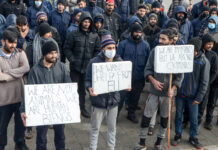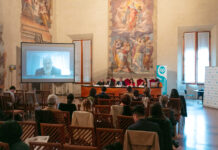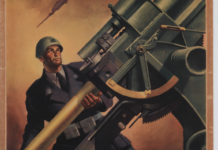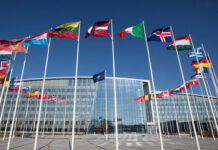Latest developments
Since 2016, the Anglophone provinces of the Northwest and Southwest of Cameroon started a campaign for autonomy: a campaign that is at times federalist, and at times independentist and secessionist. However, after negotiations with the central government, including both protests and peaceful rallies for a more just use of the English language in courts and schools, as well as against discrimination and exclusion from positions of power, autonomists chose to do it using armed force.
In October 2017, the separatists of the Republic of Ambazonia (from Ambas Bay, the bay at the mouth of the Mungo, the river that during colonialism marked the border between English and French-dominated areas) unilaterally announced their independence. This choice also conceals some economic reasons: the area is one of the richest in terms of resources. Following the self-proclamation, the secessionists announced plans to declare war on the government in Yaoundé. This was followed by harsh repression by the government’s military.
The struggle, wrongly considered a low-intensity conflict, has claimed the lives of approximately 15.000 people, 500.000 refugees, 5.000 detainees, 2 million internally displaced people (IDPs), destroyed 400 villages, and 800.000 children have been deprived of their right to education. Since 2012, the terrorist group Boko Haram has been another active front in the country. In recent years there were over 1.100 deaths, over 300 incursions, and 30 suicide attacks.
What is being fought for
Squeezed between Northern claims and Boko Haram attacks, Cameroon finds itself in a stalemate in government after the October 2018 elections, won as always by Paul Biya (ever since 1984), and as always contested. On Sunday, February 9, 2020, after 7 years and 2 different postponements, there was also a vote to elect members of the Parliament and city councils. The election was accompanied by a tense atmosphere due to the separatist violence shaking the country.
Furthermore, there is a complete lack of trust in the institutions among the younger generation, which plays an equally crucial role. In the country, more than 60% of the population is under 25 years of age. As confirmed by various NGOs and associations for the protection of human rights, including Amnesty International, the humanitarian situation is bleak, with extrajudicial killings and disappearances enforced by the central government itself.
According to statistics from the International Crisis Group, over two thousand people have died as a result of separatist claims, at least three million are in a state of a severe food shortage, and 500 thousand civilians have been forced to leave their homes. Boko Haram continues to be a serious problem in Cameroon, where it spreads terror. According to the International Crisis Group, from 2014 to 2019, the Islamist group has killed more than 2.000 people (civilians and military) in more than 100 attacks and kidnapped another 1.000. More than 322.000 Cameroonians are displaced by such violence.
Country Overview
On January 1, 1960, French Cameroon obtained independence and became the Republic of Cameroon. A year later, following a referendum, Southern Cameroon joined the country, which then became the Federal Republic, while Northern Cameroon decided to be part of Nigeria. In 1972, the first President of Cameroon, Ahmadou Ahidjo, fearing riots and demands, abolished the federal regime, creating the United Republic of Cameroon, with Yaoundé as capital. In 1982 Ahidjo resigned and decreed Prime Minister Paul Biya as his successor. A few months later, Ahidjo had second thoughts, but he was accused by Biya of orchestrating a coup d’état and was forced into exile. In January 1984, with 99.98% of votes, Biya was elected President, and the nation regained the name of Republic of Cameroon. In October 1992, Biya was re-elected in the first multi-party elections but suspended the position of Prime Minister for John Fru Ndi, leader of the Social Democratic Front (SDF), the main opposition party. After Fru Ndi attempted a self-proclamation as President, the government instituted a state of emergency and placed the opposition leader and his associates under house arrest. As a consequence of this, the United States suspended aid to the country, and Biya was forced to free Fri Ndu.
In 1994, Cameroon and Nigeria began fighting over possession of the Bakassi peninsula, an area rich in oil. Two years later, the two countries accepted UN mediation, and in October 2002 the International Court of Justice granted Cameroon sovereignty over the peninsula, although the area remained under Nigerian occupation. In 2007, Nigerian soldiers killed 21 Cameroonian soldiers on the peninsula, and the Nigerian Senate rejected the agreement to hand over the peninsula to Cameroon. The struggle continued until 2012, when Nigeria decided to accept the judgment of the International Court and returned the peninsula to Cameroon.
In 2008 began the protests against Biya’s presidency, as he was preparing to amend the constitution to further extend his mandate. The protests were crushed in blood, as then happened in 2011 when the opposition refused to recognize the election result that once again confirmed Biya in power. In May 2014, the Government sent 1.000 soldiers to patrol the border with Nigeria to counter Boko Haram militiamen. To support Cameroon, U.S. President Barack Obama authorized the dispatch of 300 military personnel to the country for intelligence, surveillance, and reconnaissance operations. The protests against the imposition of the French language in the English-speaking regions of the country began in 2016 and continued in 2017 with prolonged rallies. The self-proclaimed independence came on October 1 of the same year: the new State also gave itself a name (Ambazonia), a flag (white and blue), a national anthem, borders, and a head of State. On January 5, 2018, the President of the separatist movement of Anglophone Cameroon, Sisiku Ayuk Tabee, was arrested in Abuja, Nigeria, and extradited along with 46 of his supporters. In the same year, the U.S. State Department and the EU strongly condemned the increasing violence in the Anglophone Regions of Cameroon.
The October 2018 presidential election handed victory once again to Paul Biya, preceded by a major crisis. The candidate of the opposition party, Maurice Kamto, who officially would have obtained just 14% of the vote, declared himself the winner, but his appeals were rejected. Kamto, 65, is a former magistrate with international experience. He was formerly Biya’s minister, but went on a collision course with the President and created his own party, the Movement for the Rebirth of Cameroon (MRC). In this escalation of instability, on January 28, 2019, Maurice Kamto was arrested after an unauthorized demonstration, along with 200 other people and two reporters who were tasked with covering the protest.
On December 6, 2020, the first regional elections were held to accelerate the decentralization process and give more autonomy to English-speaking regions. This was one of the resolutions of the 2019 “national dialogue,” which implemented the 1996 Constitution. The talks were carried out without the independents and the majority of the domestic political opposition, who considered it a political farce.
Key figure or organization: Painters, sculptors, and artists of great talent and creativity.
Their works, often, are a condemnation of society. Among them is Francis Sumégné, painter and sculptor, one of the fathers of local art. is most impressive work is La Nouvelle Liberté in Douala. This monumental 12-meter sculpture is a tribute to the population’s ability to pull themselves out of difficult situations. “It is made only with recycled materials, mostly mechanical parts.” The statue represents an eight-ton man holding a globe on his head. Sumégné was born in 1951 in a small village in Cameroon, where he still uses waste to give life to his works of art, which always possess a glimpse of the future, as if he was always handling something precious. He began to devote himself to art as a child, fascinated by the tattoos and engravings on the royal houses in the West of Cameroon. He started drawing and has not stopped since.
FOCUS 1 – Urban Legends
Homosexual groups are accused of turning Cameroonian youth into lesbians and gay men. These legends are so ingrained that they shape the autobiographical narrative of LGBT people: “I met a gay boy and he made me like him,” “I became a lesbian because I attended a sports group.”
Today, being part of the LGBT community in Cameroon means facing arbitrary arrests, violence, discrimination, and a constant state of danger. Cameroonian legislation imposes sentences on those who have relations with people of the same sex: from 6 months to 5 years in prison. In the recent years the situation has worsened. A report from the international humanitarian organization Human Rights Watch shows that in the first months of 2021 there were 24 arbitrary arrests of transgender and gay people. It also reports the case of a young man placed under arrest and forced by law enforcement to submit to an HIV test. The number of cases of homobitransphobic violence increased: 578 in 2017, 1.134 in 2018, 1.380 in 2019. The data for 2020 are not yet available, but nothing suggests a possible improvement.
FOCUS 2 – Land Grabbers
Land grabbing is a plague that is devastating Cameroon. The appropriation of land by agro-industrial multinationals and foreign and local governments continues to grow. More than 10 million of Cameroon’s 22 million hectares of forests have already been allocated for mining or agricultural exploitation. More than 1 million have been earmarked for monocultures, partly due to the growing demand for palm oil in Western societies. The felling of the rainforest jeopardizes the natural habitat of many animal species including elephants, chimpanzees, baboons, and rare monkeys, but above all it creates tensions in local communities, which for centuries have lived in harmony with the land.


















